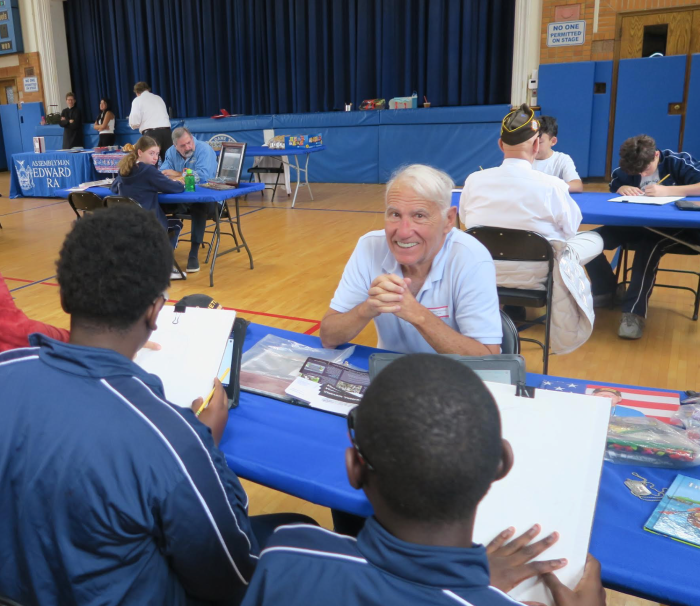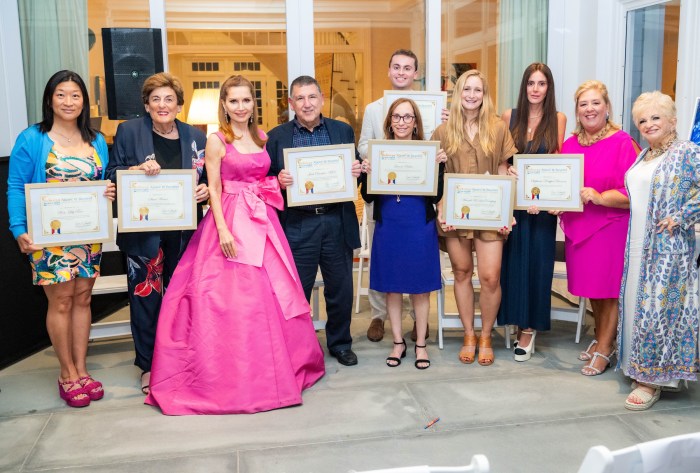
Five Great Neck high school students have been named semifinalists in the 2016 Siemens Competition in Math, Science & Technology, one of the most prestigious student competitions in the science community. The winner from John L. Miller–Great Neck North High School is Luhan (Ophelia) Chen. Winners from William A. Shine–Great Neck South High School are Shawn Kang, Hanxuan (Eric) Kuang, Jaysen Zhang and Aric Zhuang.
North High science research teachers/advisors are Takoa Lawson, Maya Lerner, Alan Schorn and Jessica Schust, department chair. Science research teachers/advisors at South High are Dr. Carol Hersh and Dr. James Truglio. These teachers provided brief project summaries of the winning projects.
North High’s Chen partnered with South High’s Kuang. In their project, A Multi-Parameter Analysis of the Dark Energy Equation of State Using Markov Chain Monte Carlo Algorithms with Type la Supernova Data, type la supernova data was analyzed using programs based on Markov Chain Monte Carlo algorithms to try to ascertain the amount and type of dark energy in the universe. The results suggested that dark energy has a large probability of being a cosmological constant, which would cause the universe to expand at an exponential rate.

Carol Hersh, Principal Susan Elliott and Bradley Krauz, department chair
Kang partnered with a student from Roslyn High School for Deep Learning Application in Edge Detection of Cell Images. A process called Deep Learning was used to predict cell edges in a cell image—which is important for analyzing how harmful cells move in the body, but it can be hard to distinguish between cells—with high accuracy, making images with multiple cells easier to analyze.
Zhang’s study, A Cell Culture Model of Glutamine Addiction in Cancer Via the c-Myc–Sirt5–Glutaminase Axis, examined how the proteins c-Myc and Sirt5 affect cellular Glutaminase activity. Since many cancer cells are addicted to Glutamine, an understanding of pathways involved in Glutamine metabolism could lead to novel treatments.
In Zhuang’s project, Reduction of Amyloid B-Mediated Lipid Peroxidation and Cytotoxicity by Helianthus Tuberosus (Jerusalem artichoke): A Potential New Disease-Modifying Therapeutic for Alzheimer’s Disease, human neuroblastoma cells and fruit flies with Alzheimer’s-disease characteristics were used to study the effects of an extract of Jerusalem artichoke. Treatment led to higher rates of survival for the neuroblastoma cells and greater activity in the fruit flies, suggesting that these extracts could potentially lead to disease-modifying treatments for Alzheimer’s.
From more than 1,600 projects submitted for consideration in this year’s competition, 498 were selected as semifinalists. The Siemens Competition was established in 1999 to promote excellence by encouraging students to undertake projects—working individually or in two- or three-person teams—to foster intensive research. The competition is administered by Discovery Education and funded by the Siemens Foundation.


































